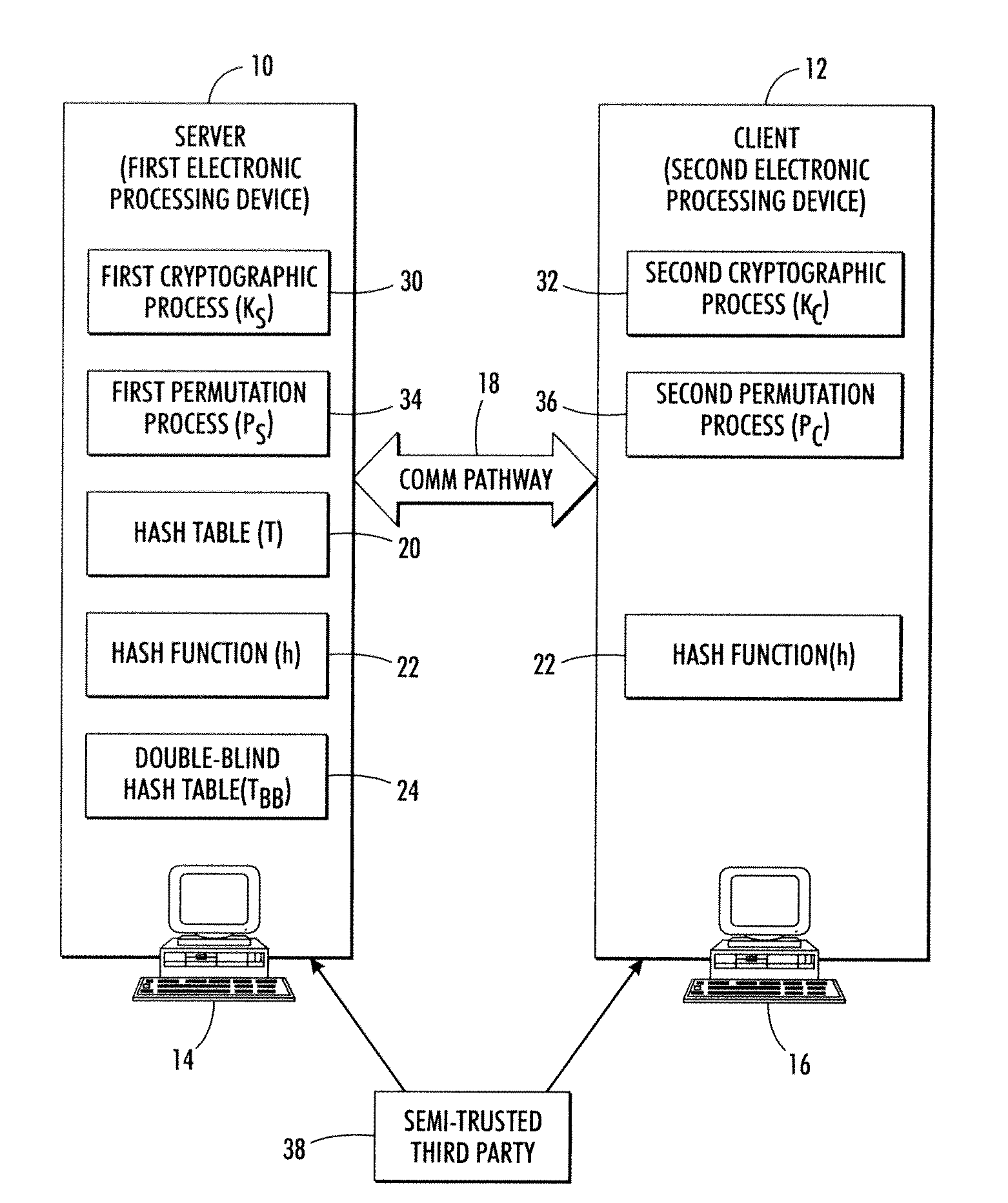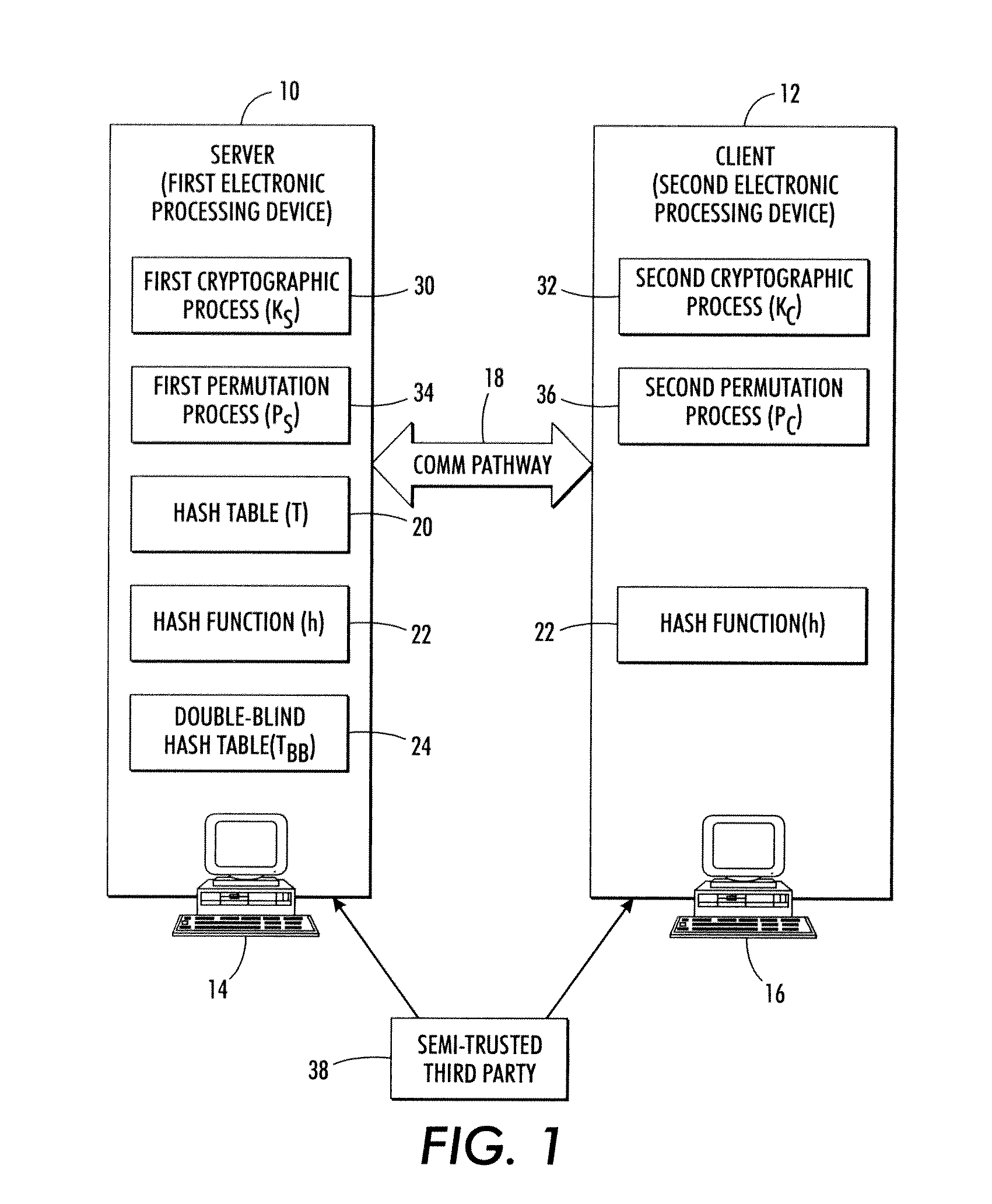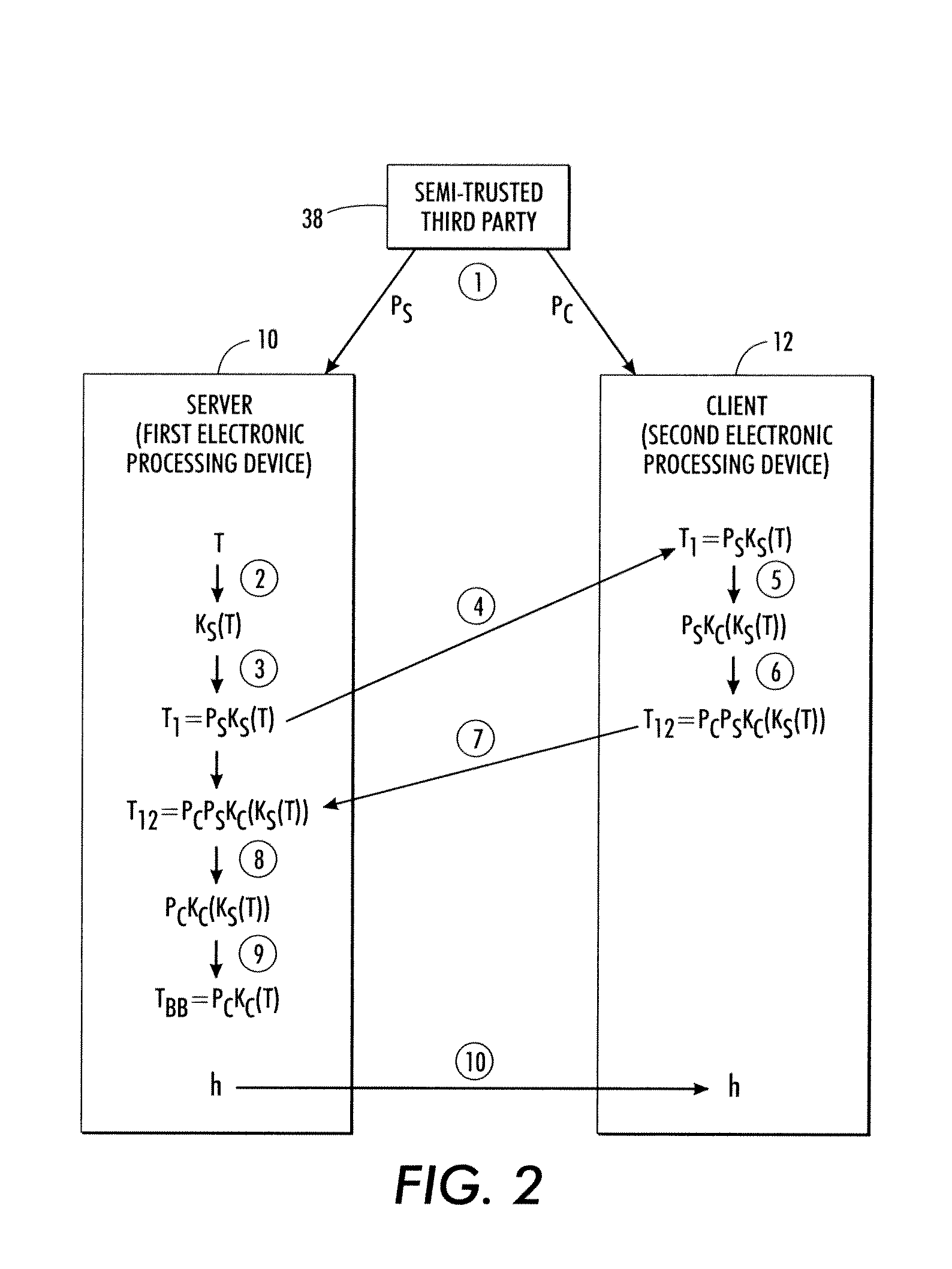Private access to hash tables
a technology of private access and hash tables, applied in the field of secure information storage, access and processing arts, can solve the problems of unable to allow the server to access the source text or the retrieved target text, loss of copyright rights, or forfeiture of other intellectual property rights, and the inability to achieve highly secure database retrieval protocols
- Summary
- Abstract
- Description
- Claims
- Application Information
AI Technical Summary
Benefits of technology
Problems solved by technology
Method used
Image
Examples
Embodiment Construction
[0019]With reference to FIG. 1, the disclosed secure database systems and methods are described in the context of a server 10 that maintains the database, and a client 12 that securely reads entries of the database while the knowledge obtainable by the server 10 is limited to counting the number of retrieved items. The terms “server”10 and “client”12 are used herein for convenience and to reflect a common practical situation in which the database owner maintains a server that is accessed by paying or nonpaying clients. More generally, the server 10 denotes a first electronic processing device 10, and the client 12 denotes a second electronic processing device 12. The first electronic processing device 10 may, for example, be a computer 14 which may be a server computer, a personal desktop or notebook computer (which may be configured as a server), or so forth. The second electronic processing device 10 may, for example, be a computer 16 which may be a personal desktop or notebook co...
PUM
 Login to View More
Login to View More Abstract
Description
Claims
Application Information
 Login to View More
Login to View More - R&D
- Intellectual Property
- Life Sciences
- Materials
- Tech Scout
- Unparalleled Data Quality
- Higher Quality Content
- 60% Fewer Hallucinations
Browse by: Latest US Patents, China's latest patents, Technical Efficacy Thesaurus, Application Domain, Technology Topic, Popular Technical Reports.
© 2025 PatSnap. All rights reserved.Legal|Privacy policy|Modern Slavery Act Transparency Statement|Sitemap|About US| Contact US: help@patsnap.com



